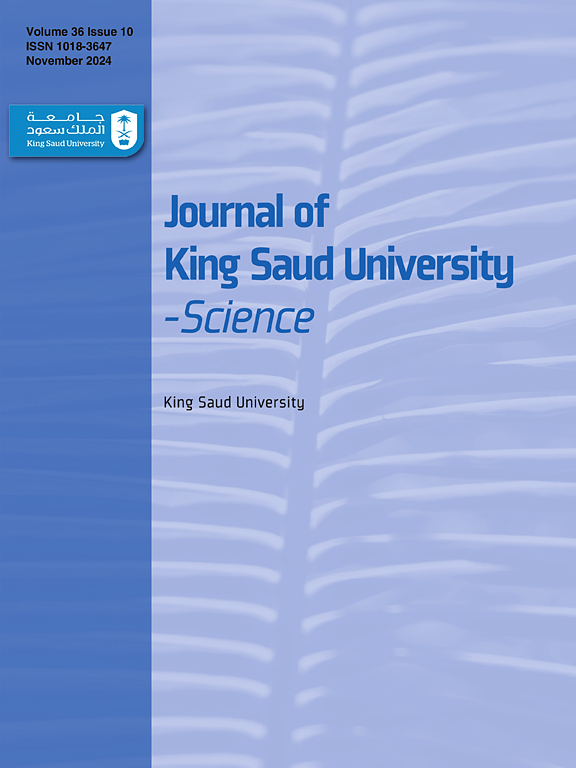Association of FokI, Tru91, and ApaI vitamin D receptor gene polymorphisms with the development of polycystic ovarian syndrome: A molecular genetic study
IF 3.6
3区 综合性期刊
Q1 MULTIDISCIPLINARY SCIENCES
引用次数: 0
Abstract
Background and objective
Polycystic ovarian syndrome (PCOS) is an endocrine disorder in women of reproductive age. The study aims to identify the impact of vitamin D receptor encoding genes (FokI, Tru91, and ApaI) on the contribution and development of PCOS, in addition to their effect on AMH levels.
Methodology
The study included 80 patients and 25 healthy individuals. The concentrations of free testosterone, vitamin D, and AMH were determined. PCR-RFLP was applied to identify vitamin D receptors in the FokI, Tru91, and ApaI SNPs. Sanger sequencing was performed on each of these patients.
Results
Increase free testosterone and AMH levels 48 (60 %) and 65 (81.3 %), respectively and reduced vitamin D levels (56 (70 % were predictors of PCOS. Regarding FOKI polymorphisms, the frequency of the heterozygous genotype (CT) was significantly greater (OR = 2.96, P < 0.05) in the PCOS group than in the healthy group. There was a three-fold increase in the prevalence of the ApaI genotype in PCOS patients versus controls (the odds ratio for the CC homozygous genotype was 3.43 with P > 0.05). In Tru91 polymorphism, the AA and GG were associated with risk factors for PCOS susceptibility (OR = 2.78, P < 0.05) (OR = 3.04, P > 0.05), whilst AG was a protective factor (OR = 0.24, P < 0.05).
Conclusions
A relationship between high levels of free testosterone, AMH levels, and vitamin D deficiency was observed. Furthermore, all genetic models’ VDR FokI, ApaI, and VDR Tru91 polymorphisms are linked to PCOS susceptibility.
FokI、Tru91和ApaI维生素D受体基因多态性与多囊卵巢综合征发生的关系:一项分子遗传学研究
背景与目的多囊卵巢综合征(PCOS)是一种发生在育龄妇女的内分泌疾病。该研究旨在确定维生素D受体编码基因(FokI, Tru91和ApaI)在PCOS的贡献和发展中的影响,以及它们对AMH水平的影响。方法本研究纳入80例患者和25例健康人。测定游离睾酮、维生素D和AMH的浓度。采用PCR-RFLP技术鉴定FokI、Tru91和ApaI snp中的维生素D受体。对每位患者进行桑格测序。结果游离睾酮和AMH水平分别升高48(60%)和65(81.3%),维生素D水平降低56(70%)是PCOS的预测因子。在FOKI多态性方面,杂合子基因型(CT)的频率显著更高(OR = 2.96, P <;PCOS组与健康组比较差异无统计学意义(0.05)。PCOS患者中ApaI基因型的患病率是对照组的3倍(CC纯合子基因型的优势比为3.43,P >;0.05)。Tru91多态性中,AA和GG与PCOS易感性相关(OR = 2.78, P <;0.05) (OR = 3.04, P >;0.05),而AG是保护因子(OR = 0.24, P <;0.05)。结论游离睾酮、AMH水平升高与维生素D缺乏存在相关性。此外,所有遗传模型的VDR FokI、ApaI和VDR Tru91多态性都与PCOS易感性有关。
本文章由计算机程序翻译,如有差异,请以英文原文为准。
求助全文
约1分钟内获得全文
求助全文
来源期刊

Journal of King Saud University - Science
Multidisciplinary-Multidisciplinary
CiteScore
7.20
自引率
2.60%
发文量
642
审稿时长
49 days
期刊介绍:
Journal of King Saud University – Science is an official refereed publication of King Saud University and the publishing services is provided by Elsevier. It publishes peer-reviewed research articles in the fields of physics, astronomy, mathematics, statistics, chemistry, biochemistry, earth sciences, life and environmental sciences on the basis of scientific originality and interdisciplinary interest. It is devoted primarily to research papers but short communications, reviews and book reviews are also included. The editorial board and associated editors, composed of prominent scientists from around the world, are representative of the disciplines covered by the journal.
 求助内容:
求助内容: 应助结果提醒方式:
应助结果提醒方式:


